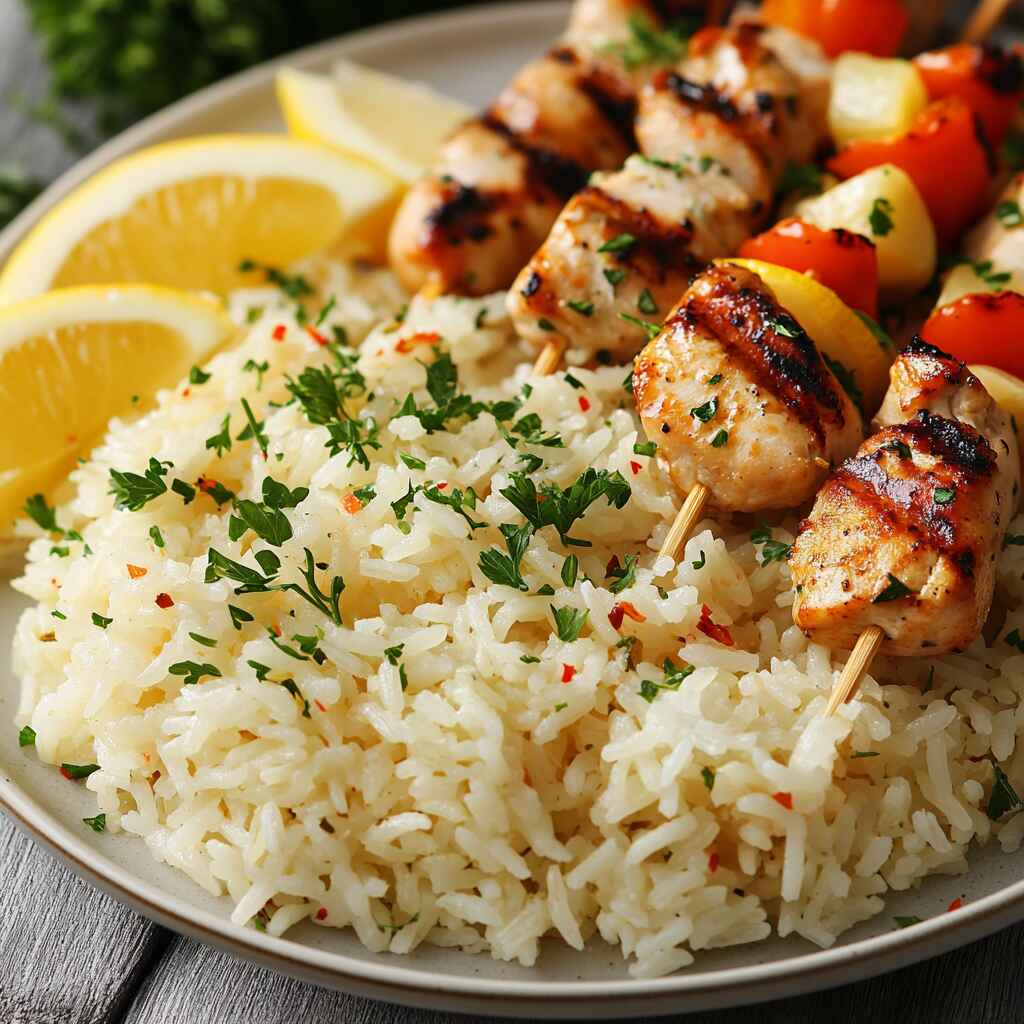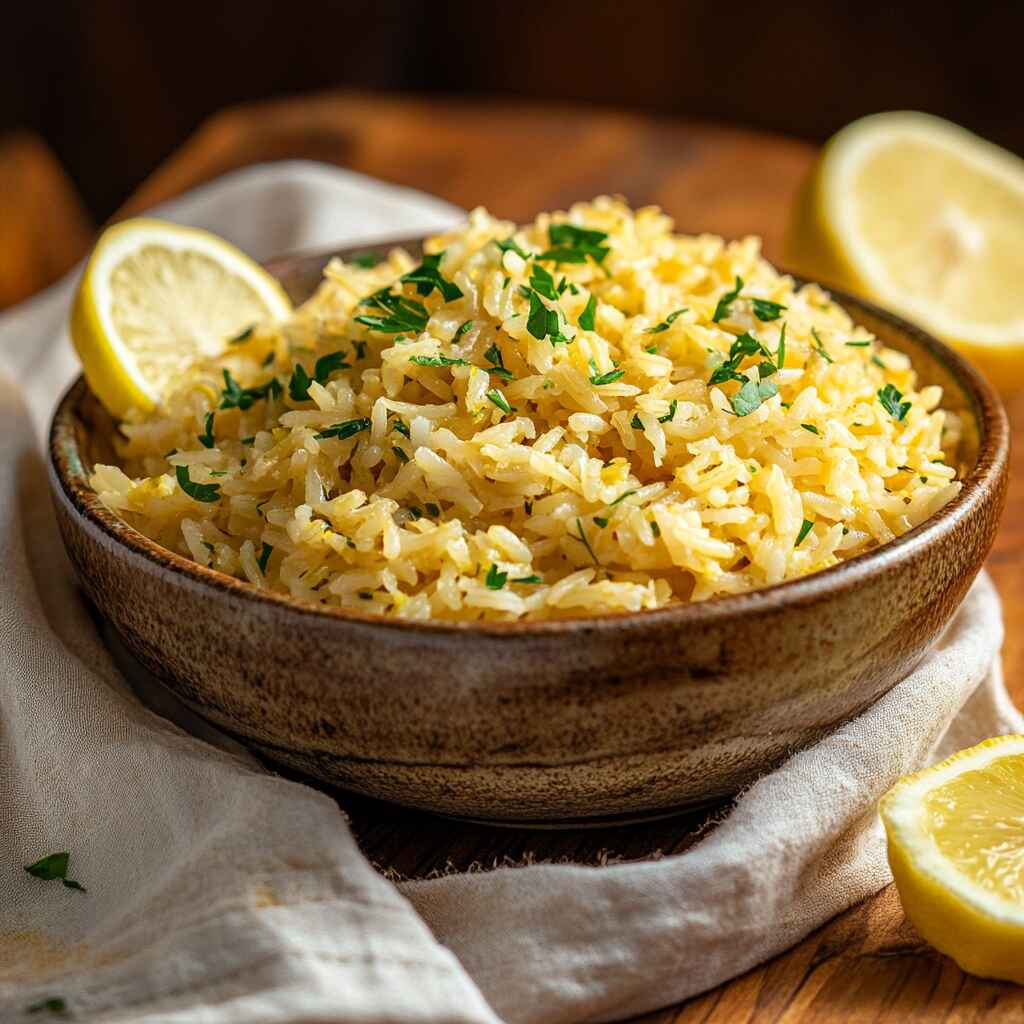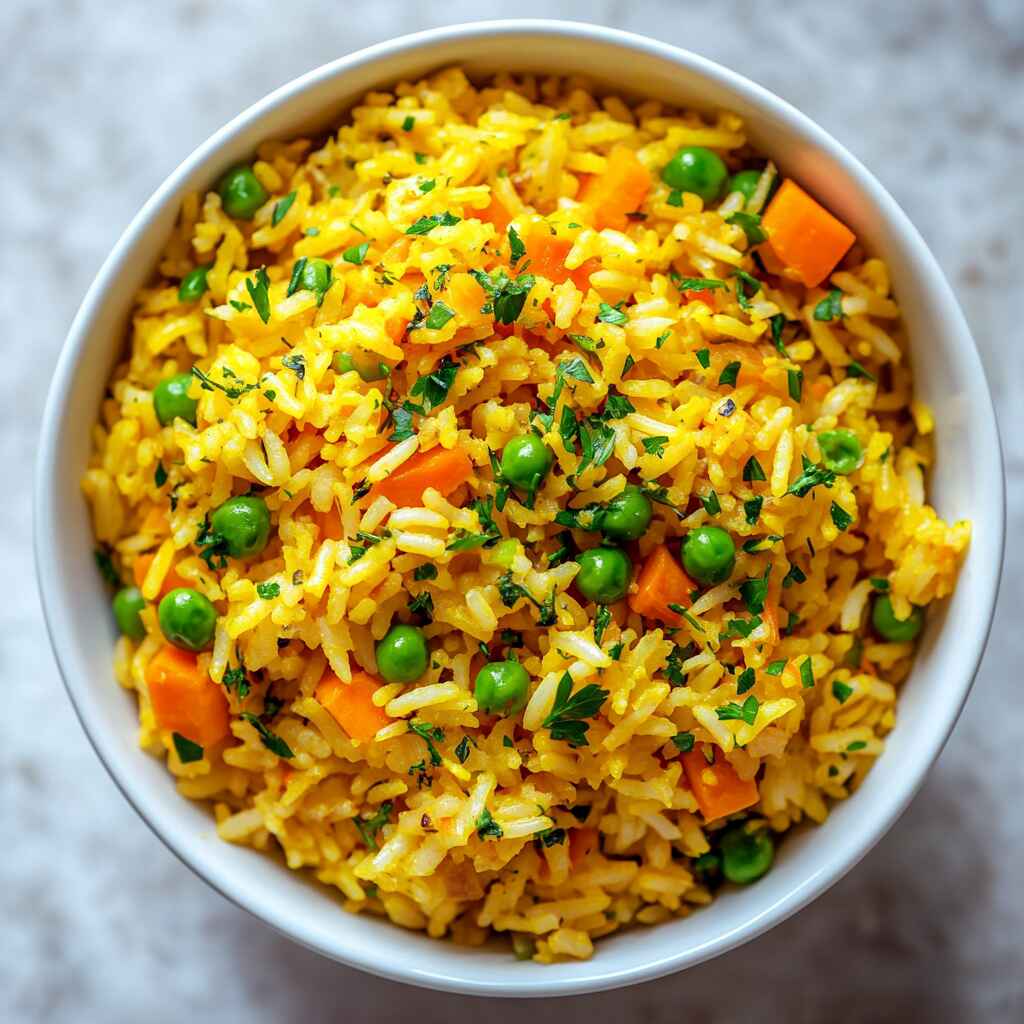Rice pilaf isn’t just a side dish it’s a celebration of flavor, simplicity, and comfort. With its buttery aroma and perfectly fluffy texture, this rice pilaf recipe has become a staple in kitchens around the world, including mine. It’s especially perfect when served alongside bold mains like juicy garlic butter steak bites, creating a balance of rich and mellow flavors. In this article, you’ll discover the heartwarming story behind my favorite rice pilaf, followed by a step-by-step guide that transforms ordinary rice into an extraordinary meal. Whether you’re planning a weeknight dinner or looking for a versatile side dish, this timeless dish offers both elegance and ease. Plus, we’ll explore tips, variations, and serving ideas to elevate your rice game.
Why this rice pilaf recipe works
This rice pilaf recipe is incredibly easy to follow, yet delivers restaurant–quality taste. The combination of sautéed aromatics, warm broth, and just the right simmering time ensures every grain is tender and full of flavor. What sets this apart from plain rice is the toasted base: by browning the rice lightly in butter or oil first, you create a nutty depth that’s undeniably delicious. You can serve it with chicken, grilled vegetables, or your favorite stew. And it reheats beautifully, making it ideal for meal prep.
How to Make the Perfect Rice Pilaf at Home
Choosing the right rice for pilaf
Not all rice is created equal especially when it comes to rice pilaf. The best rice for pilaf is long-grain white rice because it stays fluffy and separate after cooking. Basmati is a classic choice thanks to its lightly nutty aroma and firm texture. Before you even turn on the heat, rinse the rice well to remove excess starch. This helps prevent stickiness and ensures your pilaf stays light and fluffy. I usually soak mine for 10–15 minutes, which speeds up cooking and gives it that beautiful soft interior with just the right bite.
Want to switch things up? Try it with brown rice or even wild rice blends, adjusting cooking times accordingly. These pair well with bolder main dishes like beef stir fry with vegetables or something saucy like garlic butter steak bites, both of which complement pilaf’s mild flavor with bold contrast.
Toasting, simmering, and seasoning
The secret to authentic-tasting rice pilaf lies in the toasting step. In a bit of butter or olive oil, sauté chopped onion or shallots until translucent. Then stir in the rice and cook it until it starts to smell nutty and turns lightly golden. This crucial step adds a savory depth that separates pilaf from basic steamed rice. Next, pour in warm chicken or vegetable broth about 2 cups for every cup of rice and bring it to a gentle boil. Cover, reduce heat, and let it simmer undisturbed.
Season simply with salt and pepper, or elevate it with bay leaf, thyme, or even a cinnamon stick if you’re aiming for Middle Eastern flair. After about 15–18 minutes, fluff it gently with a fork. You’ll be amazed at how each grain remains distinct, yet full of flavor.
Rice Pilaf Variations Worth Trying
Vegetarian and gluten-free rice pilaf options
Rice pilaf is naturally gluten-free, which makes it a great choice for many diets. To make it vegetarian, simply swap the chicken broth for vegetable broth. You can also add sautéed vegetables like carrots, peas, or mushrooms directly into the rice before simmering. This makes the dish heartier and more colorful, without overpowering its classic base. I often serve this version with a bright salad like our corn salad recipe or a zesty chili roasted broccoli both are quick, easy, and add a pop of freshness to your plate.
For more protein, stir in cooked lentils or chickpeas just before fluffing. These additions keep the meal plant-forward and satisfying, ideal for busy weeknights when you want real food, fast. The versatility of rice pilaf is what makes it so loved you can keep it simple or make it a full meal with just a few pantry additions.
International flavor twists
If you’re looking to explore beyond the traditional style, rice pilaf is the perfect canvas for global flavors. Try a Middle Eastern twist by adding a pinch of cinnamon, allspice, and toasted almonds on top. Or go Mediterranean by stirring in chopped sun-dried tomatoes, kalamata olives, and parsley. You could even infuse the broth with saffron for a subtle golden hue and luxurious aroma reminiscent of Persian and Spanish rice dishes.
These easy variations let you adapt rice pilaf to match whatever’s on the menu, whether that’s grilled chicken skewers for a weekend cookout or a fresh chicken fajita bowl for lunch. No matter which direction you take, it starts with that same simple pilaf base rich in flavor, tradition, and comfort.
Serving Rice Pilaf Like a Pro
What to serve with rice pilaf
Rice pilaf is the kind of dish that plays well with everything. It’s neutral enough to pair with bold mains, yet flavorful enough to stand on its own. One of my favorite ways to serve it is alongside grilled or roasted meats think juicy garlic butter steak bites or chicken stir fry with vegetables. The richness of the pilaf balances beautifully with anything that’s saucy, spiced, or smoky.
For a lighter approach, serve pilaf with a side of sauteed carrots and zucchini or even a chilled salad. The gentle flavor of the rice lets bolder ingredients shine, making it a trusted companion in just about any meal.

Storing and reheating tips
Pilaf stores well, making it perfect for meal prep. Let it cool completely before transferring it to an airtight container. It’ll stay fresh in the fridge for up to 4 days. To reheat, add a splash of water or broth and warm it gently on the stovetop or microwave, covered. This revives the fluffiness without drying it out.
You can even freeze rice pilaf. Portion it into freezer-safe bags, flatten them for quick thawing, and label with the date. When you’re ready, just reheat from frozen in a skillet with a bit of water or pop it into the microwave for a convenient side in minutes. Pair it with something simple like our beef stir fry with vegetables for a quick and comforting meal.
Frequently Asked Questions About Rice Pilaf
What is the difference between rice pilaf and regular rice?
Regular rice is typically boiled or steamed in water without much seasoning. Rice pilaf, however, starts by toasting the rice in fat (like butter or oil) with aromatics such as onion or garlic. It’s then simmered in a flavorful broth, which infuses each grain with savory depth and a slightly nutty flavor.
Can I make rice pilaf with brown rice or quinoa?
Yes, but be mindful of cooking time. Brown rice takes longer and requires more liquid than white rice, so adjust accordingly. Quinoa can also be used for a protein-rich version just rinse well before cooking and follow quinoa-specific ratios.
Can I use brown rice or wild rice in pilaf?
Yes, you can make rice pilaf with brown rice or wild rice blends, but you’ll need to adjust the cooking time and liquid. Brown rice takes longer to cook and requires more broth. Wild rice brings a nutty, earthy flavor and chewy texture great for pairing with bold dishes like beef stir fry or garlic butter steak bites. Just make sure to simmer low and slow to get the best results..
What is the best rice for rice pilaf?
The best rice for rice pilaf is long grain white rice, especially basmati. It stays fluffy, separate, and absorbs flavor beautifully without turning mushy. Basmati rice also has a slightly nutty aroma that adds depth to the dish. If you’re aiming for a truly restaurant-style rice pilaf, stick with basmati or jasmine for the perfect texture and fragrance.
Conclusion
Rice pilaf may look simple, but it carries generations of comfort in every grain. Whether you’re making it as a quick weeknight side or dressing it up for guests, this dish proves that humble ingredients can create something deeply satisfying. I hope it finds a warm place at your table, just like it always has at mine.
And remember the best meals don’t just feed your body; they feed your soul.

Rice Pilaf: A Simple Classic with Soulful Flavor
Ingredients
Method
- Rinse the rice under cold water until the water runs clear.nIn a saucepan, melt butter and sauté chopped onion until translucent.nAdd rice and toast for 2–3 minutes, stirring constantly.nPour in the broth and bring to a gentle boil.nReduce heat to low, cover, and simmer for 15–18 minutes.nRemove from heat and let sit covered for 5 minutes.nFluff with a fork and garnish with herbs or nuts.

